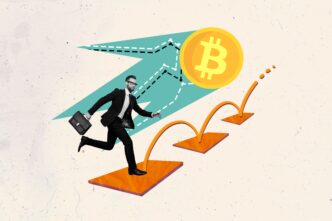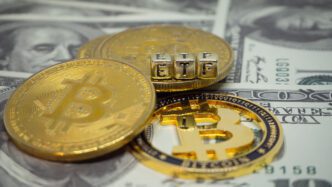President Donald Trump’s ongoing trade war has positioned the Federal Reserve in an unprecedented predicament not seen in nearly half a century, Federal Reserve Chair Jerome Powell remarked Wednesday. Speaking at the Economic Club of Chicago, Powell noted, “The level of tariff increases announced so far is significantly larger than anticipated. We may find ourselves in the challenging scenario where our dual-mandate goals are in tension.” The Fed’s dual mandate involves promoting full employment while keeping inflation at bay. However, Trump’s tariffs pose a threat to achieving these objectives.
Currently, the U.S. economy remains relatively stable, as suggested by recent data, which allows the Fed to adopt a cautious stance. Powell emphasized that the Fed’s most prudent move right now is to remain steady and observe how the economy responds to Trump’s policies. This sentiment echoes recent statements from other Fed officials, who have indicated flexibility in adjusting rates based on economic needs. Nonetheless, many economists predict that Trump’s tariffs could eventually spur inflation, increase unemployment, and dampen economic growth, especially if the significant “reciprocal” tariffs that were temporarily implemented on April 9 are reinstated later this year.
Thus far, Trump has enforced a 25% tariff on aluminum and steel, levies on non-compliant goods from Mexico and Canada, a hefty 145% duty on Chinese imports, a 25% tariff on cars, and a 10% baseline tariff on all U.S. imports. Additionally, temporary exemptions have been granted for certain electronic goods, with further tariffs anticipated on semiconductors, pharmaceuticals, copper, and timber.
The Federal Reserve now faces a challenge reminiscent of the stagflation period of the 1970s and early 1980s, characterized by high unemployment and double-digit inflation. Under Paul Volcker’s leadership, the Fed prioritized inflation control, even at the cost of economic discomfort. Although forecasts suggest a similar direction for the current U.S. economy, it’s uncertain whether it will fully replicate past stagflation conditions.
Chicago Fed President Austan Goolsbee recently stated in New York that Trump’s tariffs are pushing the central bank into a similarly tough position. “A tariff is like a negative supply shock. That’s a stagflationary shock, which is to say it makes both sides of the Fed’s dual mandate worse at the same time,” he explained. “Prices are going up while jobs are being lost, and growth is coming down, and there is not a generic playbook for how the central bank should respond to a stagflationary shock.”
Powell acknowledged that if stagflation materializes, the Fed would weigh the economy’s distance from each objective and the timeframes required to bridge these gaps. “We understand that elevated levels of unemployment or inflation can be damaging and painful for communities, families, and businesses,” he stated. Several Fed officials have underscored the importance of monitoring consumer price perceptions, which have reportedly declined according to the University of Michigan’s consumer survey.
Despite inflation being notably lower than its peak in June 2022, it remains slightly above the Fed’s 2% target, reducing the urgency to cut interest rates. For the moment, most officials agree it’s wise to await concrete evidence from data before making any moves. “This is a difficult set of risks for monetary policy to navigate,” said Cleveland Fed President Beth Hammack at a Columbus, Ohio event. “Given the economy’s starting point, and with both sides of our mandate expected to be under pressure, there is a strong case to hold monetary policy steady in order to balance the risks coming from further elevated inflation and a slowing labor market.” She concluded, “When clarity is hard to come by, waiting for additional data will help inform the path ahead.”
Understanding the Impact
The potential implications of Trump’s tariffs and the Federal Reserve’s response will likely reverberate beyond the confines of economic theory, affecting various aspects of daily life and the broader economy. For consumers, higher tariffs could translate into increased prices for goods ranging from cars to everyday electronics, squeezing household budgets and altering spending habits.
Communities may face increased financial strain as businesses grapple with higher import costs and potential job losses. This could affect local economies, with possible declines in retail sales and reduced economic vibrancy in neighborhoods. For industries reliant on global trade, the tariffs might result in disrupted supply chains and strained international relationships, potentially stifling innovation and growth.
The Federal Reserve’s cautious stance, although aimed at stabilizing the economy, signals uncertainty that might influence market sentiments. Investors and business owners alike may find themselves navigating a challenging landscape marked by fluctuating prices and shifting economic policies, making strategic planning more complex. Ultimately, these developments underscore the interconnected nature of global trade policies and domestic economic health, highlighting the importance for consumers and businesses to stay informed and adaptable in the face of evolving challenges.





